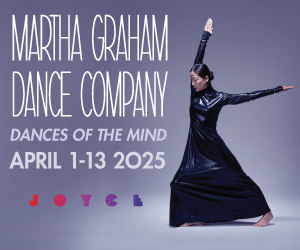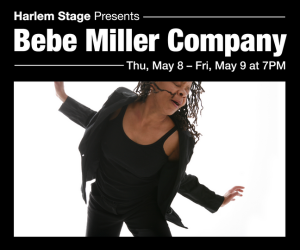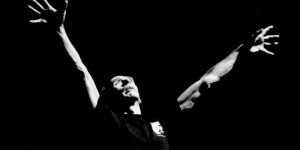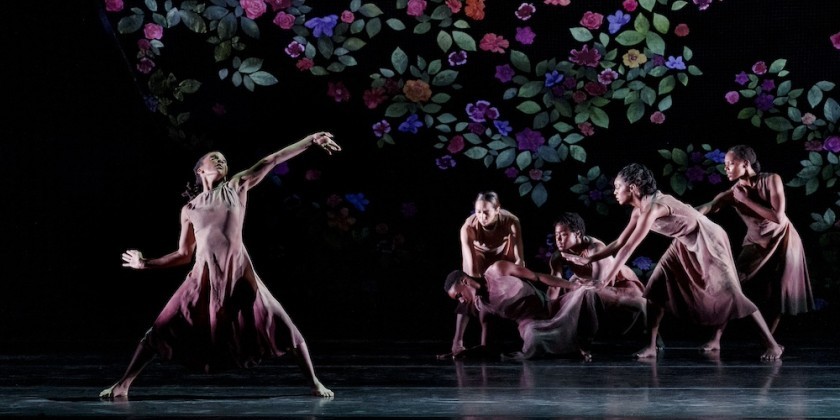
THE DANCE ENTHUSIAST ASKS: Annie B. Parson on What Dance Theater Means to Her

Choreographer Annie-B Parson is the artistic director of Obie award-winning Big Dance Theater, which she co-founded in 1991. Parson has co-created over twenty large-scale works for such venues as the Brooklyn Academy of Music, the Old Vic/London, Saddler’s Wells/London, The Walker, The National Theater in Paris, Japan Society and The Kitchen. Outside of her company, some of the artists she has worked with include David Byrne, David Bowie, Lorde, St. Vincent, Mikhail Baryshnikov, Wendy Whelan, Anne Carson, Esperanza Spalding, Suzan-Lori Parks, Laurie Anderson, Salt n Pepa, Jonathan Demme, and the Martha Graham Dance Company. Parson choreographed and did musical staging for "American Utopia," and Byrne’s musical, "Here Lies Love," as well as his tours with Brian Eno and St. Vincent.
Parson recently choreographed two operas: "Candide" at the Lyon Opera, and "The Hours"at The Met.
Her writing has been published in The Atlantic, and The Paris Review, and her book The Choreography of Everyday Life is published by Verso Press. She is presently co-editing a book with Thomas F. DeFrantz entitled: Dance History(s): Imagination as a Form of Study.
Anabella Lenzu, The Dance Enthusiasts 2024 Moving Visions Editor: How do you define 'Dance Theater'?
Annie-B Parson: I appreciate the question because it leads me to a term etched in my mind--- Dance/Theater. The first time I encountered it was in the 80s when Pina Bausch visited NYC for the first time, introducing the audience to a new genre, Tanztheatre, and altering, among other things, our costumes for performances. In those days, we predominantly wore T-shirts, drawstring pants, and bare feet, adopting what we thought of as neutral personas. Then Pina arrived, and suddenly we embraced high heels and dresses!
During my early work, David White, the artistic director at Dance Theater Workshop, called my work: American Dance/Theater." This thrilled me, as merged my experiences in choreographing for theater, with my notion of downtown postmodernism. Most importantly, witnessing Pina Bausch inspired me to infuse my work with theatrical elements.

In New York during the '60s, '70s, and '80s, dance rejected certain theatrical elements: character, narrative, and the Aristotelian structure. While these were present in 19th-century dance and early 20th-century modernist dance, they were vehemently discarded on the postmodern stage — a movement I actively participated in.
However, European Dance/Theatre introduced elements from theater that I gravitated towards. The elements I embrace are not storytelling, narrative, Aristotelian structure, or character. Instead, I focus on cause and effect, costume, set, and setting — abstract, yet theatrical.
In my work, character becomes the self, not a neutral self but the self of the dancers. This journey began in my early work in the '80s, where expressing the essence of the dancers felt crucial. So, dancers were people, not vessels, and definitely themselves, not characters. Of course, performers are people who have personalities, souls, baggage, tragedy, and intellectual perspectives — all their own. That's what I was after in rehearsal — how do I make the audience see the strange and particular beauty in this person?
People tend to hide on stage. I inherited and magnified Merce Cunningham’s notion-, he said "We give ourselves away at every moment.” this revelation of the self is not necessarily the focus of most people's work. I'm not saying it's better or worse; it's just what I'm into — exposing the “self” of each dancer.
When I check out choreographers' work, I'm very aware of how they relate to the self. What they choose to hide and what they choose to show and how real it is-- if it's a mask, for example. And if they are using a mask, are they aware they're using a mask. The Greeks used masks to theatricalize ideas and mythos. I'm not talking about that mask, I'm talking about a hiding mask.
To me, part of Dance/Theater — and I can only define it for myself — is a combining of theatrical elements with structural elements and dance elements that remain abstract until you shift them into something else. Rhythm, shape, time, space, dynamics — all those things we know — combine with theatrical elements. I grab with both hands from the pleasures of theater-- minus the story! I'm not into narrative, story, arc, and all those things. Actually, I don't even believe in it.
How did you carve out your space as a Dance Theater maker in NYC?
I don't feel that my work has been considered in the fluid context of this genre: Dance/Theater. Generally, it's a challenge for theater writers to comprehend work so rooted in dance. On the flip side, dance writers also find it tough to grapple with theatrical elements.
How do you handle psychology in your Dance Theatre works? And emotions?
Emotion and psychology, to me, are very different. I'm into emotion! But in my rehearsal room, it comes in through the back door. I don't approach it from the front. I'm approaching it from an embodied perspective. I really don't like forced or acted out emotion. It puts my whole body into a kind of coma. But psychology —no, I think through movement.
How do you define the difference between physical theatre and Dance Theater?
Dance/Theater incorporates various aspects of the theatrical palette, while physical theatre, for me, isn’t interested in many theatrical elements --and often the performers are trained very differently.
It's all about labels, from the beginning of our conversation!
Physical theater has a less recognizable relationship to dance technique, less connection to a dance vocabulary.
I increasingly feel that dance can be quite siloed. This, in part, is why there hasn't been a proliferation of Dance/Theater. There's this moment, a cusp, where the question arises: should we categorize this as Dance or Theater? My response: neither and both. It's a spectrum because, for me, when I'm creating, I don't consciously think, "This is dance, and that's theater!" I utilize the elements that suit the moment I am expressing.

Let’s talk about pushing the boundaries and experimentation. I'm curious about how you approach text and words.
I approach the text very choreographically… but this would take hours to unpack! It’s a life’s work really. When working with performers on text, most of them have no training (which I usually prefer), I'm not interested in traditional acting in my work so I have other more choreographic approaches to text.
Wow! Are you writing a new book?
Big Dance Theater, my company, is currently in the process of producing a dance history book, co-edited by Thomas DeFrantz and myself. We've engaged 12 choreographers, each tasked with crafting their unique rendition of dance history spanning from the earliest times. The directive is simple: approach it from a poetic perspective. We've explicitly asked them not to delve into academic readings or histories, but to express their individual viewpoints poetically.
It's about capturing a personal version of dance history without being confined to conventional narratives. If I were to ask you, "What's your take on dance history?" — that's the spirit we're fostering. The responses are really far out.
I'm really interested in how artists write about history and the notion that while an historian looks at history through a window, an artist looks at history with a mirror.

Please tell us about your other books!
The first book I wrote is an ABC of dance definitions. It's called Dance by Letter. That is a real favorite of mine. It's tiny. It defines issues of choreography from my own perspective, again, very subjective.
Then the second book I did was a book with Wesleyan Press. That was the charts I've made of my dances, because after I make dances, I usually do a drawing or a chart in order to sort of put the dance away in the drawer. It's about the dances’ materialities, because I do use a lot of props and objects and costumes in my dances. I really love choreographing props, I love people in relation to objects; I think objects have some sort of life.
My latest book is the one that just came out called The Choreography of Everyday Life, published by Verso Press. In this book, I am writing about the world from a choreographic perspective.
Created in 2020 as a way to lift up and include new voices in the conversation about dance, The Dance Enthusiast's Moving Visions Initiative welcomes artists and other enthusiasts to be guest editors and guide our coverage. Moving Visions Editors share their passion, expertise, and curiosity with us as we celebrate their accomplishments and viewpoints.
Created in 2020 as a way to lift up and include new voices in the conversation about dance, The Dance Enthusiast's Moving Visions Initiative welcomes artists and other enthusiasts to be guest editors and guide our coverage. Moving Visions Editors share their passion, expertise, and curiosity with us as we celebrate their accomplishments and viewpoints.















